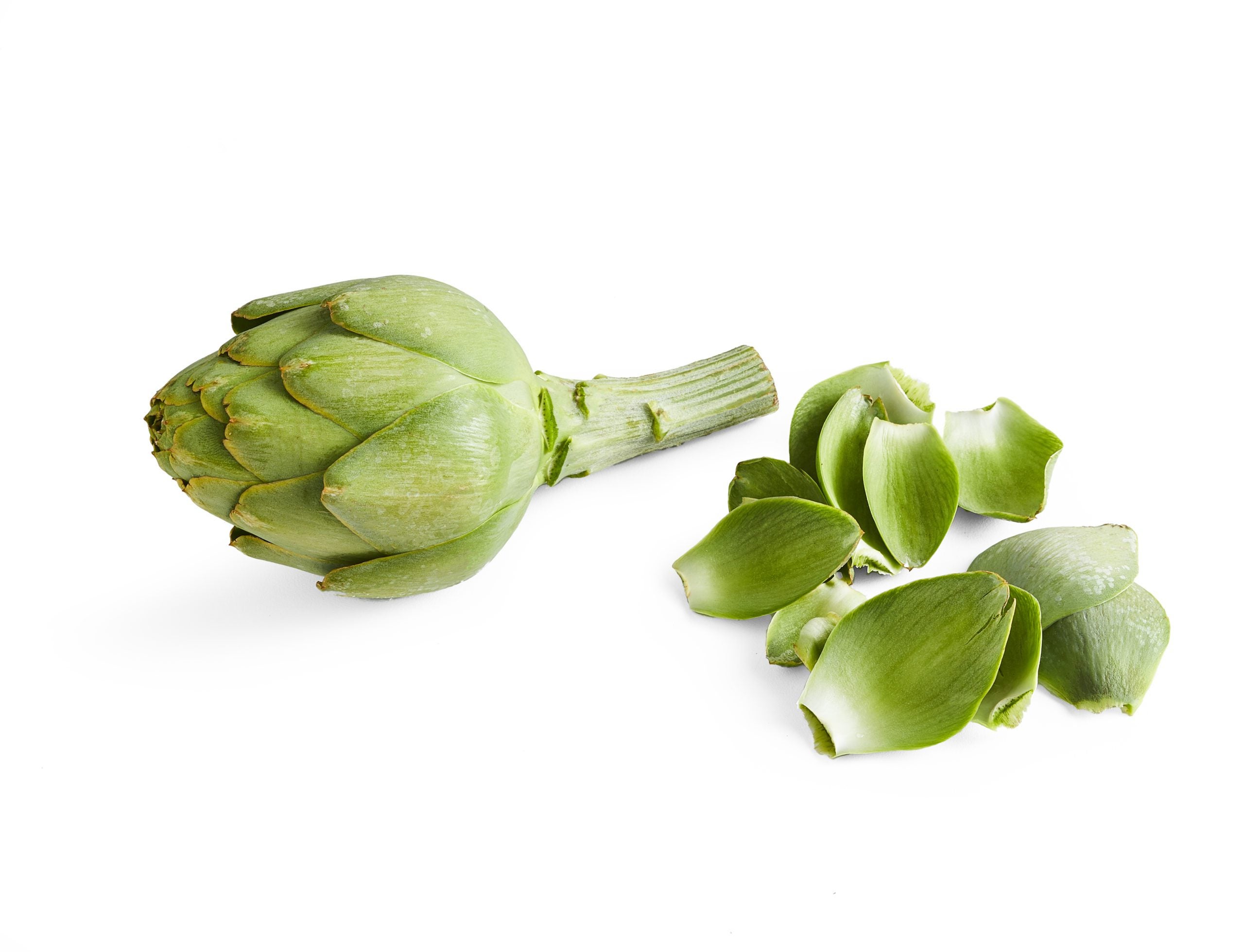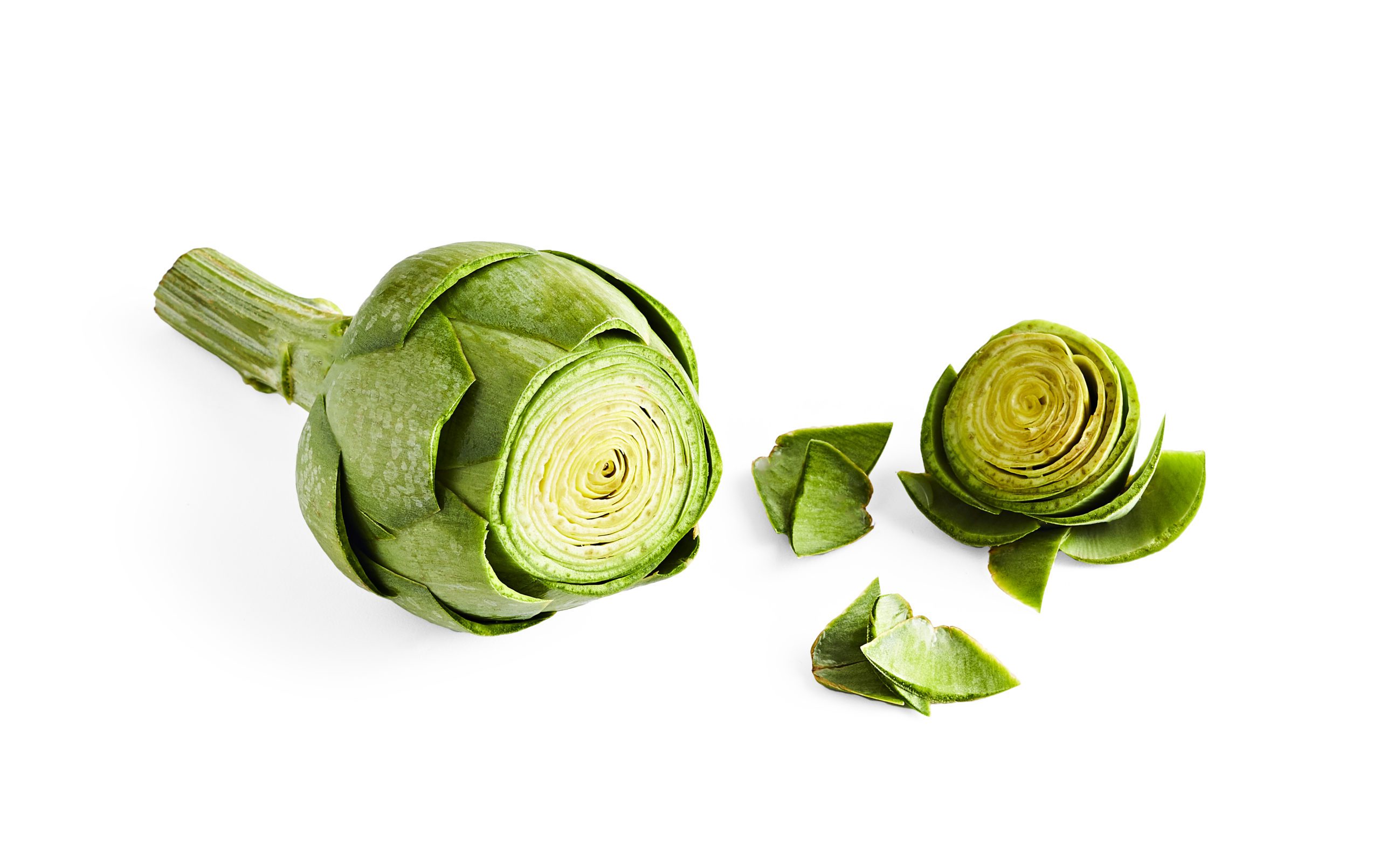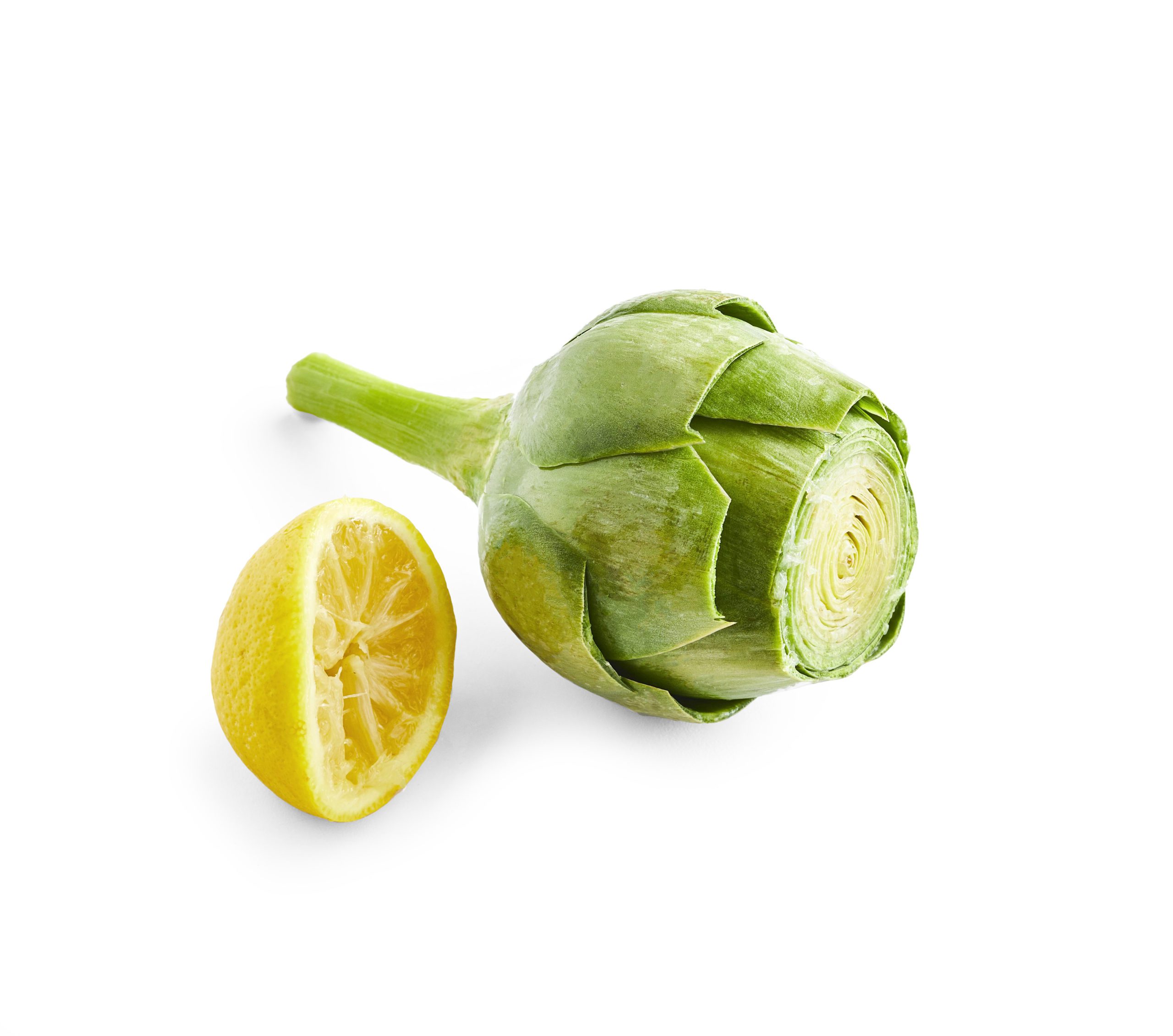
Ingredient IQ: Artichokes
Underneath their prickly exterior, artichokes provide plenty of fiber (7 grams per medium artichoke) and more disease-thwarting antioxidant activity than any other vegetable. How do artichokes taste? Like a vegetable delicacy: tender, mildly sweet, and a little nutty. A large steamed artichoke with your favorite dipping sauce makes a wonderful shared appetizer—or a delicious main dish when you want something light to eat. Round it out with a side of soup or whole grains.
Selecting and Storing Artichokes
Look for artichokes at farmers markets during their peak season from March to May, or in supermarkets year-round—the majority of North American artichokes grow in Central California, thanks to its mild summers and winters.
Choose artichokes with thick, bright leaves that “squeak” when you squeeze them. The smaller the artichoke, the sweeter it will be.
Stored in the fridge, artichokes will last up to five days.
How to Trim and Prepare an Artichoke
Trimming an artichoke removes the woodiest outer layer, for easier cooking and eating. Here’s how you do it.




How to Eat an Artichoke
Artichokes can be eaten raw or cooked. To eat one, pluck off each leaf, dip it into yourpreferred sauce(Vegan Creamy Italian Dressing,Ranch Dressing, andTahini Dipping Sauceare all good options), and slide between your teeth. Discard the purple leaves in the center and the fuzzy choke underneath. What remains at the bottom is the creamy, melt-in-your-mouth heart.
How to Cook an Artichoke
There are several methods for cooking artichokes.
Trim artichoke. (See above for trimming instructions.) Place in a steamer basket in a saucepan. Add water to saucepan to just below basket. Cover pan and steam 25 to 40 minutes, or until the leaves are tender.
Trim artichoke. (See above for trimming instructions.) Scrape out choke using a metal spoon; then cut artichoke in half lengthwise. Steam artichoke halves (see above for steaming directions) until leaves are nearly tender. Place cut-side down on a grill. Cover. Grill 5 to 10 minutes.
Trim artichoke. (See above for trimming instructions.) Bring a medium or large pot of water to boiling. Place trimmed artichoke in water. Reduce to a simmer. Cover. After about 20 minutes, remove using tongs. Place on a plate. Give one of the leaves a tug. If it comes off easily, it's done cooking. If not, return artichoke to boiling water and cook for another 5 to 10 minutes. Once it’s fully cooked, drain and serve.
What Are Baby Artichokes?
Baby artichokes, which are actually fully grown miniature artichokes, have softer leaves and no choke, making them easier to prepare. Try trimming and halving them, then sautéing, roasting, or grilling for a crowd-pleasing treat.
How to Use Artichokes in Recipes
Artichokes are an easy add-on ingredient: Toss chopped artichoke hearts into spring vegetable stews, pile them with cherry tomatoes onto morning avocado toast, or swirl them into creamy plant-based risotto. Add them tohomemade pizza. Or jazz up pastas and salads with frozen artichoke hearts, which have less sodium than their canned counterparts.
Forks Over Knives Recipes to Try

Potato and Artichoke Heart Pasta Salad
Dairy-Free Spinach and Artichoke Dip
Broccoli Pasta Salad with Red Pepper Pesto
Quinoa Primavera
Vegan Niçoise Salad Bowls
For more guidance in healthy cooking, check outForks Meal Planner, FOK’s easy weekly meal-planning tool to keep you on a plant-based path. To learn more about a whole-food, plant-based diet, visit ourPlant-Based Primer.
